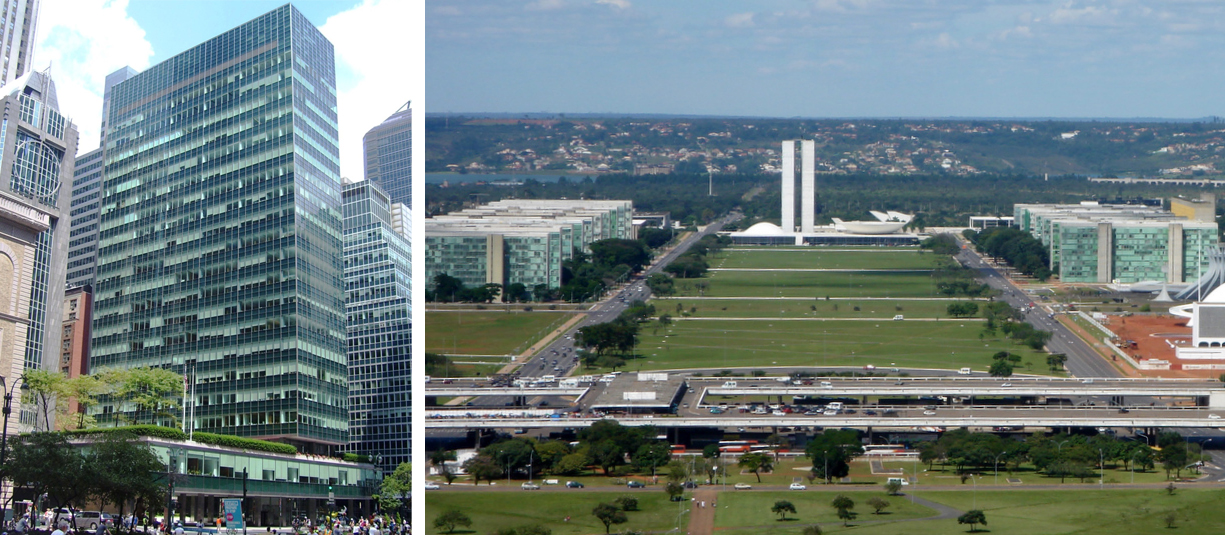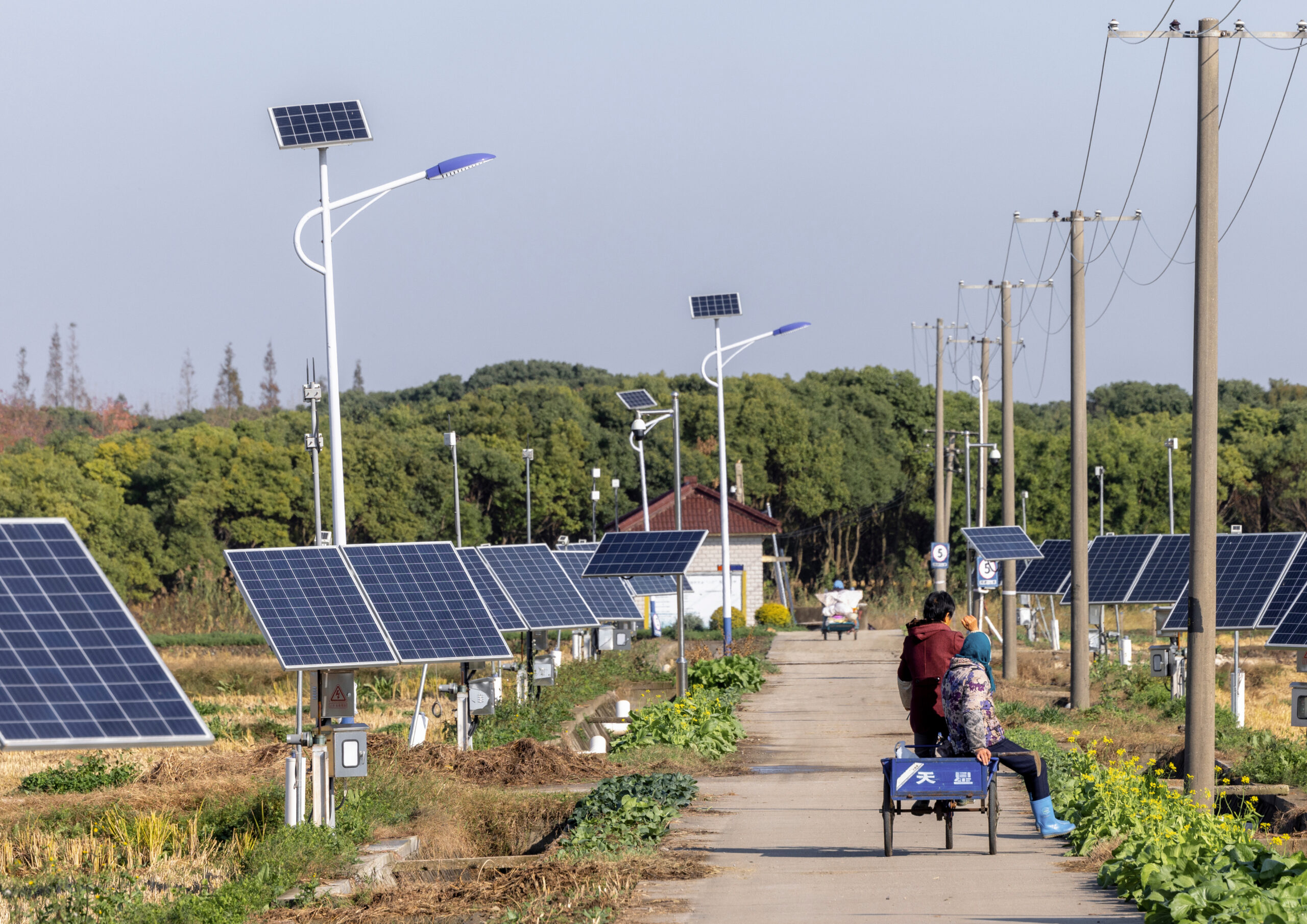This article was written by Edward Mazria, FAIA, the founder and CEO of Architecture 2030 whose mission is to rapidly transform the built environment from a major emitter of greenhouse gases to a central source of solutions to the climate crisis. For 20 years, the nonprofit has provided leadership and designed actions toward this shift and a healthy future for all.
In this era of climate crisis, it is imperative that we harness our resources and knowledge to create transformative changes in the built environment. The urgency to address the pressing issues of climate change, social inequalities and the need for sustainable, resilient and livable communities is more evident than ever. Looking back on the transformative impact of Modernism, which reshaped the global built environment in just twenty-seven years, we find ourselves at a pivotal moment where we possess the knowledge and tools to envision doing the same at an accelerated pace. By embracing ten globally applicable and adaptable principles drawn from proven strategies, sources and existing traditions worldwide, we will usher in a new era of design and planning that mitigates carbon emissions, enhances biodiversity, promotes efficient transportation, and fosters inclusive and thriving communities.
A Pivotal Moment: Harnessing Modernism’s Legacy
In the late 19th and early 20th centuries, the rise of industrialization and urbanization brought significant changes to cities and societies. Rapid population growth, abysmal and unsanitary living conditions — overcrowding and inadequate access to basic amenities such as clean water, sanitation facilities and adequate housing — and social inequalities became pressing urban issues. In response to these dire circumstances, architects and urban planners recognized the urgent need for change. They began to question the traditional architecture and urban planning approaches that had prevailed for centuries. In 1928, twenty-eight leading European architects convened the first (of 11) International Congress of Modern Architecture (CIAM) meetings in Switzerland. This new movement, also known as Modernism, sought to address these issues by embracing new materials, technologies and, most importantly, new design principles.

Hardie/Wikimedia; Air pollution in Victorian-era Britain.
The CIAM and Le Corbusier each introduced five concise and highly visual planning and architecture principles that laid the groundwork for a new modern urbanism and building design. The five CIAM planning principles included:
1. Function-Based Zones
2. High-Rise Housing Blocks
3. Ample Parkland
4. Solar Exposure and Sunlight for Buildings and Urban Layouts
5. Free and Efficient Road Circulation.
During that period, Le Corbusier presented the five points of architecture which shaped the discourse and contributed to the emerging development of modern architecture:
1. Column-Wall Separation
2. Free Design of the Façade
3. Horizontal Windows
4. Free Design of the Plan
5. Roof Gardens
These principles continue to influence urban planners and architects to this day.
It took roughly twenty-seven years for Modernism to completely transform the global built environment, from the Bauhaus, built in Germany in 1925, which marked the beginning of a new modern era in architecture and design; to the high-rise Lever House in New York in 1952 with its sleek glass curtain walls and open floor plans; and Brasilia, the capital city of Brazil, often regarded as a significant example of modern planning principles in the 1950s. This twenty-seven year timeframe encapsulates the comprehensive transition brought about by Modernism, reshaping the built environment, and leaving an indelible mark on the world today.
The stark contrast between the modest design tools utilized during the Modern Movement, such as T-squares, triangles, ink pens, inkwells and slide rules — the first laptop wasn’t introduced until the 1980s — and the state-of-the-art digital tools available today, highlights the remarkable progress that have condensed current design time, expanded information and accuracy, and revolutionized the fields of architecture and planning.

Right: Beyond My Ken, Lever House 390 Park Avenue, CC BY-SA 4.0 | Left: Mario Roberto Durán Ortiz (modificado por Heitor Carvalho Jorge), Esplanada dos Ministérios, Brasília DF 04 2006 (modificada), public domain on Wikimedia Commons
Today, about 56% of the world’s population, or 4.4 billion people, live in urban areas. According to the World Bank, “this trend is expected to continue, with the urban population more than doubling by 2050”. This rapid urbanization will be accompanied by a significant environmental challenge, as urban areas are responsible for approximately 75% of all global CO2 emissions, with buildings and infrastructure constituting the major source.
Also, we now find ourselves rapidly approaching the critical 1.5-degree Celsius planetary warming threshold established by the scientific community to avert dangerous and destabilizing climate change. The implications of this warming trend are nothing short of alarming, as we witness and experience the increasingly devastating climatic impacts now unfolding across the planet. The need for immediate action has never been more evident, as the stability and well-being of our ecosystems, communities, and future generations are at stake.
According to the International Energy Agency, to have a good probability of meeting the 1.5-degree Celsius threshold, we must reduce global CO2 emissions by 50% by 2030 and achieve carbon neutrality by about 2040. If we delay reaching carbon neutrality until 2050, our chances of meeting the 1.5°C target drop to a 50% probability. Therefore, it is crucial that we prioritize a new approach to urbanization in the present decade to effectively address the climate crisis. This necessitates a fundamental shift by implementing transformative architecture and planning concepts and design principles.
The Ten Principles
The ten principles presented here are both globally applicable and adaptable to suit specific climates, regions, local conditions, and communities. They are derived and aggregated from existing applications, traditions, and sources worldwide. They call for a fundamental shift in our prevailing approach to the built and natural environments.

A Waterfront Homestead Reborn: Restorative Design in the Yangtze Delta Polders by Shanghai Landscape Architecture Design and Research Institute, Shanghai, China | Jury Winner, 11th Annual A+Awards, Sustainable Landscape / Planning Project
PLANNING
1. Growth Boundaries, Compact and Resilient Development
Establish urban growth boundaries and develop plans for infill, compact development, and strategies to effectively mitigate the impacts of extreme weather, control sprawl, reduce vulnerability and enhance climate resilience.
2. Natural Environments, Open Lands and Parks
Promote biodiversity, community well-being, and traditional knowledge by creating and restoring habitat corridors, parks, landscape networks, forests, living shorelines and riparian buffers, and protecting agrarian landscapes and cultural heritage sites.
3. Transit-Oriented Development (TOD) and Transit Mobility
Promote TODs that align density, integrate public transit, cycling and walkability, and locate residential, commercial and recreational areas near transit hubs to reduce auto use and enhance accessibility.
4. Mixed-Use Neighborhoods and Users
Create inclusive, mixed-use neighborhoods that combine residences, businesses, workplaces and civic services to ensure convenient access, reduced auto dependency, and an improved quality of life for all residents. Integrate residential options in commercial blocks, and locate schools, social services and civic facilities within neighborhoods to promote equitable access to education, healthcare and community resources.
5. Human-Scale Streets, Small Blocks, Walking and Biking
Increase the density of road networks with small blocks and human-scaled streets, and prioritize walking and biking, ensuring the availability of safe, direct and comfortable routes throughout neighborhoods.
ARCHITECTURE AND DESIGN
1. Electrification, Passive Systems and Renewable Energy Electrify
Incorporate passive solar heating, cooling, daylighting, natural ventilation and other passive and efficiency design strategies, and integrate building and onsite and/or off-site renewable energy for building operations (use no onsite fossil fuels).
2. Reuse, Adapt, Renovate and Restore Buildings
Prioritize reusing, adapting, renovating, and restoring existing buildings instead of constructing new ones, thereby reducing embodied carbon and preserving valuable resources.
3. Carbon Sequestering Landscapes and Infrastructure
Minimize hardscapes and structures, increase carbon sequestering landscapes, and promote resilience by enhancing and creating natural infrastructures — constructed wetlands, bioswales, urban forests, living shorelines, riparian buffers and green roofs — that address and mitigate the threats from climate change.
4. Building Disassembly, Optimized Structure and Nature-Based Materials
Design buildings with low-to-zero embodied carbon materials and prioritize sufficiency by considering building disassembly, optimizing structure and space utilization, incorporating recycled or reclaimed materials and locally sourced nature-based products. This approach decreases energy and resource consumption while effectively reducing emissions and environmental impacts.
5. Mapping and Designing for Climate Impacts
Map present and future climate and weather-related hazards to identify the current and potential impacts of climate change. Use mapping information to mitigate impacts and ensure resilience when planning developments and designing building structures, landscapes, and infrastructure.

CUCADELLUM – Funicular to the Tibidabo Amusement Park by MIAS ARCHITECTS, Barcelona, Spain | Popular Choice Winner, 11th Annual A+Awards, Sustainable Transportation Project
The shift from the basic design tools of the Modern period to the advanced digital tools today, has not only increased design efficiency and accuracy but has also accelerated the design process, allowing architects and planners to create, modify, and visualize complex designs, explore options, simulate energy, carbon and environmental impacts, and optimize energy efficiency.
In just twenty-seven years, from the Bauhaus to Lever House, Modernism revolutionized the built environment. Building upon this transformative legacy, we now find ourselves at a pivotal moment, armed with the knowledge, resources, and tools to envision and create sustainable, resilient, and climate-responsive built environments at an unprecedented pace. By fully embracing this paradigm shift in architecture and planning, we will forge a path towards a collective and sustainable future that addresses the urgent challenges of our time and brings about a lasting positive change in the built environment.
For more resources, read: The 2030 Palette by Architecture 2030; “Ending Global Sprawl” by Peter Calthorpe; Carbon Positive Design and Pathfinder; Achieving a decarbonized and climate-resilient built environment by C40 Cities; AIA Framework for Design Excellence; UNECE San Marino Declaration; Defining the 15-minute city by Andres Duany and Robert Steuteville; “I0 Copenhagen Lessons” from the UIA; and Bringing Big Ideas Down to Earth Through Nature-centered Landscape Architecture by Kongjian Yu, to name just a few.
Edward Mazria, FAIA, is founder and CEO of the nonprofit Architecture 2030 and an internationally recognized architect, author, researcher, and educator. Over the past four decades, his seminal research into the sustainability, resilience, energy consumption, and greenhouse gas emissions of the built environment has redefined the role of architecture, planning, design, and building in reshaping our world. He was awarded the 2021 AIA Gold Medal for his “unwavering voice and leadership” in the fight against climate change.
This article first appeared in ARCHITECT magazine. For more articles from Architecture 2030, click here: https://www.architectmagazine.com/organization/architecture-2030.









